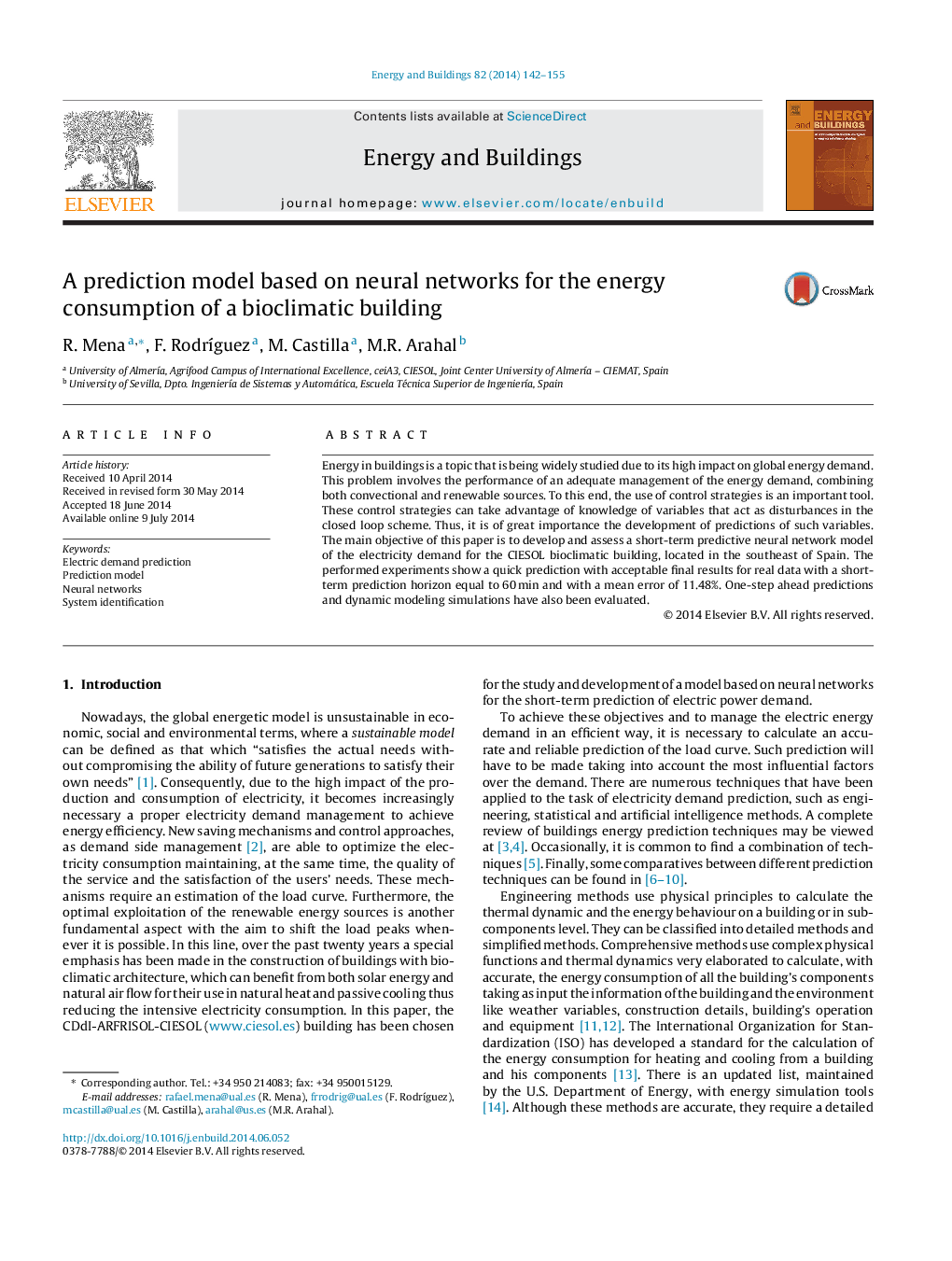| Article ID | Journal | Published Year | Pages | File Type |
|---|---|---|---|---|
| 262657 | Energy and Buildings | 2014 | 14 Pages |
•Different energy demand profiles have been characterized in a bioclimatic building.•The most influential factors on the building power demand have been identified.•A well-structured methodology is proposed for ANN-based model development.•Two approaches are used based on the information from a solar cooling installation.•Results show a quick prediction for real data with a mean error of 11.48%.
Energy in buildings is a topic that is being widely studied due to its high impact on global energy demand. This problem involves the performance of an adequate management of the energy demand, combining both convectional and renewable sources. To this end, the use of control strategies is an important tool. These control strategies can take advantage of knowledge of variables that act as disturbances in the closed loop scheme. Thus, it is of great importance the development of predictions of such variables. The main objective of this paper is to develop and assess a short-term predictive neural network model of the electricity demand for the CIESOL bioclimatic building, located in the southeast of Spain. The performed experiments show a quick prediction with acceptable final results for real data with a short-term prediction horizon equal to 60 min and with a mean error of 11.48%. One-step ahead predictions and dynamic modeling simulations have also been evaluated.
